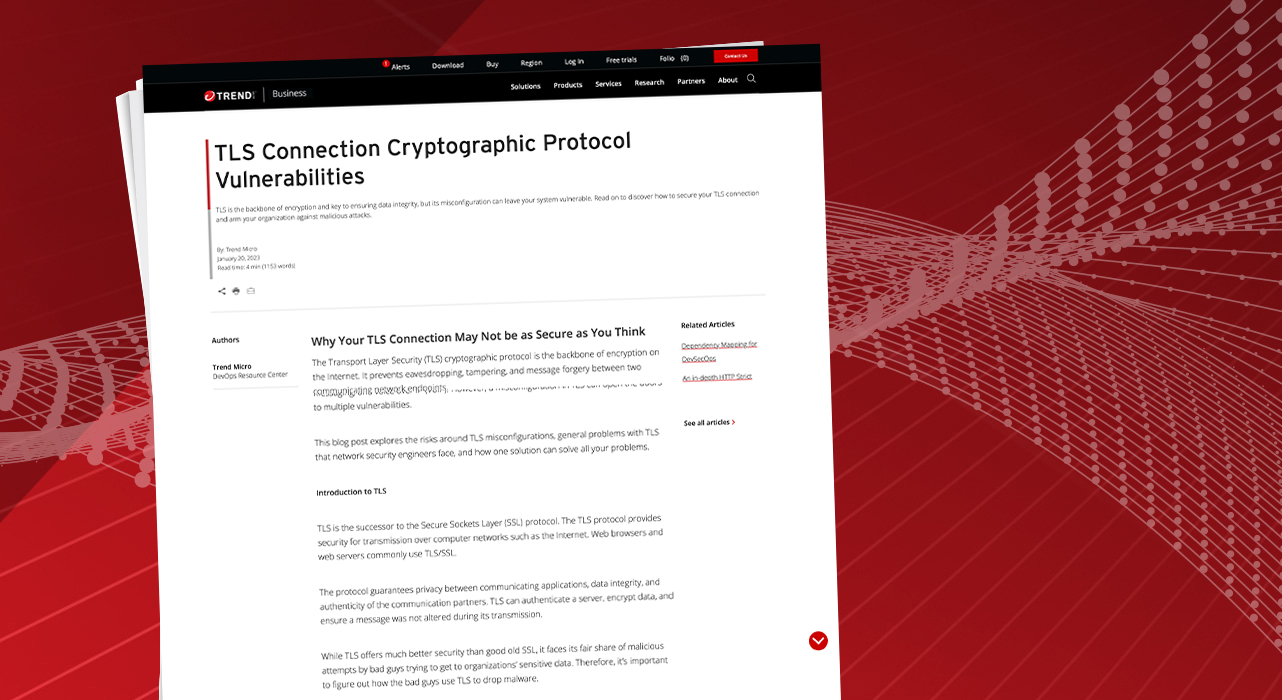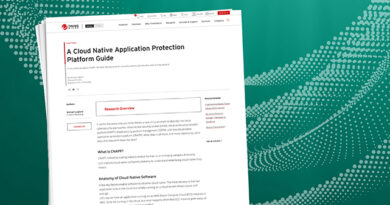TLS Connection Cryptographic Protocol Vulnerabilities


Why Your TLS Connection May Not be as Secure as You Think
The Transport Layer Security (TLS) cryptographic protocol is the backbone of encryption on the Internet. It prevents eavesdropping, tampering, and message forgery between two communicating network endpoints.
TLS secures many types of Internet communication, including web browsing, email, instant messaging, and voice over IP (VoIP). However, a misconfiguration in TLS can open the doors to multiple vulnerabilities.
This blog post explores the risks around TLS misconfigurations, general problems with TLS that network security engineers face, and how one solution can solve all your problems.
TLS is the successor to the Secure Sockets Layer (SSL) protocol. The TLS protocol provides security for transmission over computer networks such as the Internet. Web browsers and web servers commonly use TLS/SSL.
The protocol guarantees privacy between communicating applications, data integrity, and authenticity of the communication partners. TLS can authenticate a server, encrypt data, and ensure a message was not altered during its transmission.
While TLS offers much better security than good old SSL, it faces its fair share of malicious attempts by bad guys trying to get to organizations’ sensitive data. Therefore, it’s important to figure out how the bad guys use TLS to drop malware.
It goes without saying that TLS is not responsible for securing your data at its destination; instead, it just guarantees safe passage for your data over the Internet, ensuring that the data in transit can’t be eavesdropped upon or modified in any way.
Attackers are increasingly targeting TLS connections to drop malware, perform other malicious activities, and exploit its weaknesses to target Internet users. This protocol has significant vulnerabilities, most of which affect TLS v1.2 and older versions. Even TLS v1.3 is not impeccable, as most vulnerabilities are based on forced downgrade attacks.
When using TLS, there’s a good chance that the information sent through the connection is not inspected or monitored at the endpoint. This is because TLS uses encryption algorithms to scramble data in transit, so it’s assumed to be secure; however, hackers can take advantage of this. Because everyone thinks they are secure enough, hackers on the other end can exploit various vulnerabilities in TLS to listen to the traffic (which can lead to financial and business loss) and even drop malware.
One of the most common TLS security risks is the use of weak ciphers. Attackers can crack weak ciphers easily, thereby allowing them to gain access to sensitive data. Some other TLS vulnerabilities include Padding Oracle on Downgraded Legacy Encryption (POODLE), man-in-the-middle (MITM), and so on.
POODLE is a security flaw in the SSL 3.0 protocol. This flaw allows attackers to decrypt encrypted data using SSL 3.0, which some websites and browsers still use.
A malicious actor can carry out an MITM attack by intercepting your traffic while you try to initiate a TLS handshake with an application server. They can then impersonate the server until you agree to downgrade the connection to SSL v3.0. Because the vulnerability is in the cipher block chaining (CBC) mode, the server ignores the content inside the padding. In other words, the server does not check if someone tampered with the content of the padding.
Another example is Browser Exploit Against SSL/TLS (BEAST), which decrypts data encrypted by the RC4 stream cipher. Yet another similar vulnerability, listed as CVE-2011-3389 in the National Institute of Standards and Technology (NIST) National Vulnerability Database (NVD), takes advantage of the implementation of the cipher block chaining (CBC) mode in TLS v1.0, which can also be carried out by forced downgrades. Flooding the TLS stream with malicious packets is another example of a MITM attack.
There are multiple other examples, such as Compression Ratio Info-leak Made Easy (CRIME), Browser Reconnaissance and Exfiltration via Adaptive Compression of Hypertext (BREACH), Heartbleed, Lucky Thirteen, renegotiation denial of service (DoS), and so on. From this list, you can conclude that although the TLS protocol is essential to secure the transmission of data, if not configured properly, it may do your organization’s network more harm than good. There are solutions available for most of these vulnerabilities used to mitigate risks. However, it’s too much manual effort to test for vulnerabilities and then patch them.
A robust network security solution that fights off all such problems seems the best way to intelligently protect your cloud infrastructure from multiple threats. This is where Trend Micro comes in.
Trend Cloud One can help you eliminate all the above issues and more. It seamlessly:
- Deploys into existing architecture
- Inspects both inbound and outbound traffic
- Detects and prevents intrusions
Regardless of whether your infrastructure is on Amazon Web Services (AWS) or Azure, Cloud One will have its intrusion prevention system (IPS), a virtual appliance, sitting in the middle of your network seamlessly receiving, decrypting, and inspecting your traffic to detect and prevent intrusion by stopping the flow and alerting you using a Security Information and Event Management (SIEM) system when malicious activity is detected along the transmission line, thereby effectively protecting your network from the bad guys.
Trend Cloud One uses IPS with TLS Session Key Intercept to decrypt information and inspect data with zero configurations, without the need to import certificates and credentials. This feature comes out of the box with Trend Cloud One – Network Security and Workload Security, which offer more than the legacy SSL inspection implementation. The TLS credential configuration does not need to be implemented manually and supports more functionalities, including the Perfect Forward Secrecy (PFS) ciphers.
Even with zero-day attacks and vulnerabilities being discovered quite frequently, you need not worry, as multiple teams of security engineers and security research scientists at Trend continue to research new vulnerabilities and patches that are rolled out to all users. You and your team can continue to focus on delivering your business goals while Trend Cloud One takes care of the automatic patching of vulnerabilities.
Conclusion
A typical Internet user, though not always mindful of it, does a lot of things online that require trusting others. From sending our medical data to a doctor online to making online purchases, we rely on TLS connections to keep our data secure. Whether a small-scale business or a multinational organization, ensuring the TLS connection is secure is essential.
TLS is an upgrade to the previous security standard, SSL, and has evolved a lot in terms of security. However, some loopholes reveal themselves if you use TLS without real-time oversight.
To ensure that the millions of incoming requests are safe by monitoring each one of them and ensuring the traffic is secure, consider letting Trend Cloud One take care of your network and workload whether your infrastructure sits on AWS or Azure.
Learn more about securing TLS with Trend Cloud One.
Read More HERE



